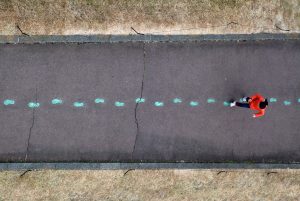Understanding Universal Design for Learning (UDL)
Universal Design for Learning (UDL) is a research-based framework aimed at creating equitable, accessible, and flexible learning environments. At its core, UDL recognizes that students bring diverse backgrounds, learning styles, and abilities into the classroom. Rather than offering a single, one-size-fits-all approach, UDL encourages educators to provide multiple means of engagement, representation, and expression.
By doing so, educators reduce barriers to learning and allow each student to interact with the material in ways that best suit their needs. For instance, a UDL-guided curriculum might include text-based materials, videos with captions, audio recordings, and interactive activities. In both physical and digital classrooms, this approach helps ensure that students with various needs—such as those with sensory impairments, learning disabilities, or language barriers—can all access the same content.

Ensuring Accessibility in Online Settings
Online education offers convenience and flexibility, but it also requires careful planning to be inclusive. Some best practices for ensuring accessibility include:
1. Alt Text and Captions: Provide alternative text for images and captions for videos so that students using screen readers or with hearing impairments can still engage with the content.
2. Accessible Documents: Use clear headings, large fonts, and high-contrast color schemes. Follow recognized guidelines such as the Web Content Accessibility Guidelines (WCAG) for web-based materials.
3. Assistive Technologies: Encourage or enable the use of screen readers, text-to-speech tools, voice recognition software, and adjustable display settings.
4. Flexible Assessments: Offer multiple ways for students to demonstrate their knowledge—written, oral, video-based, or project-based.
In my own learning and teaching experiences, accessibility played a significant role when I realized that some students struggled with certain digital platforms. Ensuring closed-captioning in video discussions and offering transcripts for recorded lectures made a noticeable difference in how inclusively everyone could participate.
Ethical Challenges of EdTech
While educational technology brings significant benefits—such as personalized learning pathways and broad access—it also comes with ethical considerations:
1. Privacy and Data Security: Many digital tools collect student data (e.g., learning analytics, browsing activity). Educators must ensure compliance with data protection laws and maintain transparency about what is being collected and why.
2. Equity and the Digital Divide: Not all students have reliable internet access or up-to-date devices. Relying heavily on technology without alternative options can inadvertently exclude students who face resource constraints.
3. Bias in Algorithms: Some edtech platforms use AI-driven analytics or adaptive learning systems that might contain embedded biases. Educators should critically evaluate tools and avoid reinforcing stereotypes or discriminatory practices.
Balancing these benefits and risks requires thoughtful planning—offering offline options when possible, being transparent about data usage, and selecting platforms that prioritize user privacy and security.

Ethical Considerations in Digital Interactions
In digital spaces, our interactions can feel anonymous or impersonal, but ethical standards still apply. As participants in online communities—whether in a learning management system or on social media—we have a responsibility to:
1. Respect and Civility: Engage with others politely and constructively, even when disagreements arise.
2. Inclusivity: Use inclusive language and be mindful of different cultural backgrounds, gender identities, and abilities.
3. Academic Integrity: Attribute sources properly, avoid plagiarism, and respect intellectual property.
4. Digital Footprint Awareness: Recognize that what we post online can be long-lasting and far-reaching. A responsible digital presence protects both our own reputations and the well-being of others.
Applying UDL and Accessibility Principles: A Reflection
Reflecting on my past learning experiences, I recall an online course that utilized video lectures without captions and reading materials that were not screen-reader friendly. This posed challenges for classmates who had hearing impairments or relied on assistive technology. Simple improvements—such as adding closed captions, using more accessible PDF formats, and providing an audio alternative—would have made a huge difference in supporting all learners.
Had the instructor adopted a UDL approach, the course design would likely have featured multiple modes of accessing content (e.g., transcripts alongside videos, interactive discussion forums, and optional live Q&A sessions). Additionally, ensuring that the learning management system met WCAG standards would have further helped those who needed screen readers or customized formatting.
Conclusion
Universal Design for Learning, accessibility in online settings, and ethical considerations in edtech and digital interactions are deeply interconnected. By adopting a UDL mindset, teachers can preemptively design courses that address a wide spectrum of learner needs—improving outcomes for everyone. At the same time, attending to ethical dimensions such as data privacy, equity, and respectful online conduct helps create a safe and welcoming space for all. Ultimately, thoughtful, inclusive, and ethical practices lay the groundwork for sustainable and meaningful educational experiences in the digital era.




